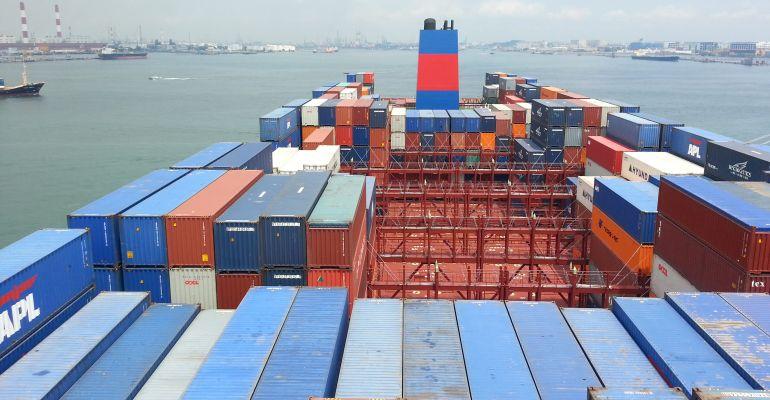“Container shipping remains disrupted by box equipment shortages which are restricting available capacity and so forcing freight rates to record highs. However, this is being driven by empty container repositioning issues rather than inadequate fleet,” wrote Martin Dixon, director, head of research products, Drewry.
In terms of supply, the global ocean-borne container equipment fleet is expected to end the year having declined 1.1% to 39.9m teu compared to a 3.3% projected fall in 2020 global container port handling, according to Drewry’s forecast. This suggests that the former has more than kept pace with the latter.
The global container port throughput declined almost 6% in the first half and will boom over 15% through the final six months of the year, according to Drewry.
“But despite this unexpected surge, the ratio of port throughput per shipping container, a key measure of equipment availability, only reached a reading of 20 in 2H20, which is not particularly high by historical standards. This is indicative of sufficient equipment fleet to support ongoing cargo demand,” Dixon said.
“Rather, it is the disruption to container supply chains wrought by the unprecedented number of blanked sailings, which reached as high as 30% of sailings on some trades back in 2Q20, that led to the current shortage of empty containers in key cargo demand centres such as China.”
Nonetheless, the surge in cargo demand has boosted investment in new container equipment. From a 35% contraction in global output in the first quarter, manufacturing has since recovered and is expected to reach 2.67m teu by the end of the year, down 5% on 2019.
“But with demand for new containers remaining strong and factories reporting full orderbooks well into 1Q21, output in 2021 is forecast to leap as much as 40% with further growth anticipated in subsequent years,” Dixon said.
“The ramp up of newbuild production will certainly help alleviate some of the ongoing container equipment shortages, but the greatest impact will come from a normalisation of cargo demand development and carrier sailing schedules, as Covid-19 related disruption unwinds through the first half of 2021,” he said.
Copyright © 2024. All rights reserved. Seatrade, a trading name of Informa Markets (UK) Limited.
Add Seatrade Maritime News to your Google News feed.  |

